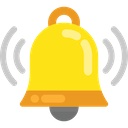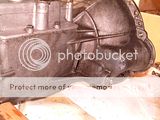I know that I have been here before and it was a struggle but I cannot remember what I need to do.
The problem is the top bolt of the starter. I can get to the front of the bolt and turn it without
too much trouble but all I can do is turn it round and round. There is obviously a nut behind it
that I have to get to keep it from turning. I am stumped at how I get to that backside of the bolt
to allow me to remove it. The best I could come up with was using a long screwdriver and stick
it down in what looks like the vicinity of the nut and get really lucky in being able to stop it from
turning. I would imagine that I need to figure out some way to get to this as reinstalling
the starter will be an even bigger problem. I will need to more than just get to the nut to stop it from
turning. Is it possible to even see this part of the bolt? If so I have not found it.
Thanks very much,
Jim Lee
Tr3a 1959
The problem is the top bolt of the starter. I can get to the front of the bolt and turn it without
too much trouble but all I can do is turn it round and round. There is obviously a nut behind it
that I have to get to keep it from turning. I am stumped at how I get to that backside of the bolt
to allow me to remove it. The best I could come up with was using a long screwdriver and stick
it down in what looks like the vicinity of the nut and get really lucky in being able to stop it from
turning. I would imagine that I need to figure out some way to get to this as reinstalling
the starter will be an even bigger problem. I will need to more than just get to the nut to stop it from
turning. Is it possible to even see this part of the bolt? If so I have not found it.
Thanks very much,
Jim Lee
Tr3a 1959

 Hi Guest!
Hi Guest!

 smilie in place of the real @
smilie in place of the real @
 Pretty Please - add it to our Events forum(s) and add to the calendar! >>
Pretty Please - add it to our Events forum(s) and add to the calendar! >> 


